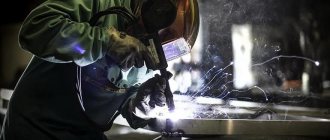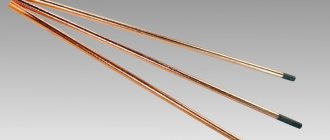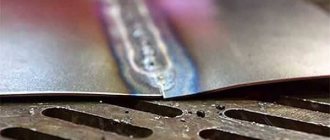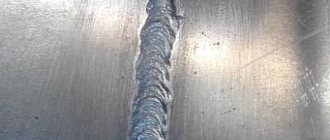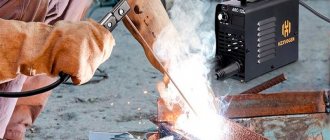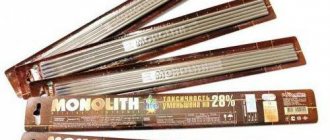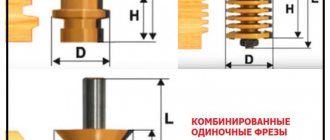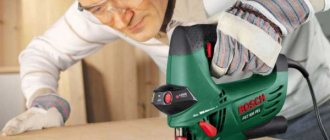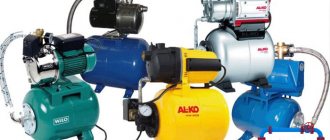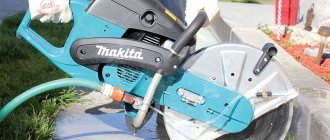For installation of metal products and repair work, DC welding is often used. Using rectifiers and inverters, you can change the polarity when welding and regulate the zone of maximum heating of the arc. It is worth talking about the nuances of direct and reverse connection of poles in detail: how the poles are connected, in which cases the minus is brought out to the electrode, what is the peculiarity of the seam with direct and reverse polarity.
Overview of species
Gas welding and the process of joining workpieces performed by an electric arc have fundamental technological differences.
The demand for welding machines with electric current connection is much higher, since automatic inverters or semi-automatic ones used for manual electric welding are universal, which makes it possible to use them in domestic conditions. It is believed that the difference in working with direct and alternating current is significant. When purchasing a welding machine, users rarely change the type of direct current to alternating current, since it is easier to weld with direct current - you just need to connect the power source. However, not everything is as simple as it seems.
Straight
The designation “straight polarity welding” implies a process during which a positive charge of electric current is supplied to the work surface of the workpiece through a welding rectifier. Changing the polarity in each case has a different effect on the efficiency of the electrode. Electric current with forward direction will correspond to the following characteristics:
- during the electric welding process, the working surface of the workpiece does not heat up, since the flow of thermal energy to it is minimal;
- under the action of the electrode, a sufficient depth of penetration of the workpiece metal occurs, but it is much less than in reverse polarity welding;
- during operation, the welding electrode melts quite quickly, and in order to complete the entire amount of work, it is sometimes necessary to replace it;
- the likelihood that metal splashes will form during the welding process is quite high.
When performing welding work using direct polarity of electric current, the melting rate of the metal is the highest, it is almost twice as high as when welding using electric current of reverse polarity. But there is a nuance, which consists in the fact that the resulting electric arc with the method of direct polarity of the electric current does not generate its heating as stably as it happens with reverse polarity, and the electric welding process itself is accompanied by the formation of metal splashes.
Reverse
In order to carry out welding manipulations, where an electric current of reverse polarity is used, the terminals are connected using the opposite method. A negative charge should be supplied to the working surface of the part from the negative terminal, while a positive current charge will be supplied to the welding electrode from the positive terminal.
Features of reverse polarity electric welding are as follows:
- during welding work, the working surface of the workpiece heats up quite strongly;
- this type of technology provides fairly deep penetration of the metal and a high-quality weld;
- the welding electrode melts very slowly during operation and does not require frequent replacement;
- When welding, there is very little spattering of molten metal.
When working with constant electric current, to join workpieces, it is important to thoroughly and evenly heat the working surface until the metal melts. This is done to form a weld pool on the workpieces.
Moreover, if the power of the electric current is insufficient, then the surface of the workpiece will not be heated properly, and if the power of the electric current is excessively high, then the surface of the part will be overheated, and during electric welding, the electric arc will flow into the workpiece, pushing the metal back.
Overview of species
The ability to connect the welding machine cables in different ways allows for a change in polarity, as a result of which it is possible to increase the depth of penetration into the metal and ultimately achieve a dense weld on workpieces even less than 0.5 mm wide. The difference between the direct and reverse sequence of movement of the electric current is the ability to regulate the location of the electric arc relative to the workpiece, as well as the degree of heating of the surfaces being welded.
When changing the polarity of the connection, it is important to pay attention to the fact that the thermal energy will be generated at the anode many times more than in the cathode region. By default, the new inverter welding machine is configured to work with direct polarity connection. If necessary, you can rearrange the wires and terminals at any time
In this case, the welder decides for himself how and into which connectors to connect the electrode holder and the clothespin to the metal. When the polarities change, the movement of the electric current will become opposite, thereby changing the characteristics of the welding process itself
If necessary, you can rearrange the wires and terminals at any time. In this case, the welder decides for himself how and into which connectors to connect the electrode holder and the clothespin to the metal. When the polarities change, the movement of the electric current will become opposite, thereby changing the characteristics of the welding process itself.
Straight
Straight connection polarity has the following characteristics:
during the electric welding process, a rather deep but narrow seam is obtained on the surface of the joined workpieces;
the electric welding process is quite easy, which is especially important if there is no iron in the alloy or the thickness of the metal workpieces is 3 mm;
the electric arc is stable and constant, not prone to breakdowns; the welding process cannot be performed if you use wire that contains conductive material or is designed to work in alternating current mode; using an electric arc you can cut metal workpieces;
the strength of the electric current affects the chemical composition of the weld, making it strong and neat; the technique can be used to perform welding work in a protective environment of argon or helium;
heating of the filler wire or electrical conductor occurs slowly;
This electric welding technology can be used with inverters that operate in high-frequency electric current mode;
when forming a seam, the percentage of carbon introduced into the mass of molten metal is reduced.
To successfully perform the electric welding process when working with direct electric current, it is necessary to thoroughly heat the surface of the workpiece, bringing it to the point of melting. This will form a weld pool. In this case, the forward and reverse polarity of the direction of the electric current affects the characteristics of the weld pool. When operating in direct polarity mode, a medium is formed within the bath that can easily be filled with molten metal. It spreads, and the movement of the welding electrode sets the direction of the seam being formed, while controlling its depth on the welding object.
Reverse
Reversing the polarity of the electric current also has its own distinctive features:
- the depth of the weld seam is small, but its thickness is significant;
- if you need to weld two very thin metal plates, then with this method their working surface will not be deformed;
- the electric arc is unstable, so in this case you cannot use a welding inverter, which operates on a low electric current;
- during operation, the risk of burning through the surface of thin-walled parts is minimal;
- the work does not use electrodes that can be destroyed by high temperatures;
- to obtain a high-quality result, the process implies the presence of a minimum gap between the workpieces;
- The welding process is performed using an intermittent type of seam.
The choice of polarity for connecting an inverter welding machine also determines the choice of welding electrodes. For example, when working in reverse connection, the carbon rods will quickly melt and burn, so this type of electrode is only suitable for working in direct connection mode. The quality of the width and depth of the weld also depends on the choice of polarity. The higher the electric current, the deeper the metal is welded.
Polarity when welding
In manual arc welding, the filler wire is fed automatically. Welding of parts using RDS technology is carried out at direct current. The ground and electrode cables must be connected to the welding inverter terminals. They are indicated by the signs “+” and “-“. Polarity determines the method of connecting wires to the terminal blocks of the semiautomatic device. This parameter depends on the nature of the movement of elementary particles, which affects the welding process. If a semi-automatic welding device operates with alternating current, the welder will not be able to change the polarity
When welding with straight polarity, the cable with the electrode rod is connected to the “minus” contact, and the wire with the clothespin is connected to the “plus” connector. The temperature at the ends of the electric inverter reaches 1000 °C. When switching to reverse polarity, the wires with the electrode and the clothespin must be swapped. The temperature at the ends of the electrode rod will rise to 4000 °C. Changing the polarity allows you to control the temperature of the workpieces being processed.
It is necessary to change the location of cables when processing alloyed products. The polarity changes with different functional modes of the welding machine. They are determined by the size and material of the welded products. Direct cable connection is used when welding work is carried out outdoors. Under these conditions, the parts are connected using a tubular aluminum thread filled with a powdery substance. Under these conditions, thick metal plates can be welded.
Changing the location of the cables is carried out under the following conditions:
- In the presence of protective gases designed to isolate metals from the effects of oxides and accelerate the heating of the arc.
- When using flux additives, it is necessary to create a uniform diffuse layer.
With direct and reverse polarity, anode and cathode spots are formed. The anode cloud is the hottest. Its temperature can reach 800 °C. An electric current passes through the spots. These areas experience low voltage due to the location of the welding arc.
Changing the polarity allows the welder to increase the depth of the weld seam and process structures with a width of less than 0.3 cm. Welding in direct and reverse sequences provides the ability to adjust the location of the arc, which reduces the heating rate of the welded products.
The following features of MMA welding with straight polarity are distinguished:
- Allows you to obtain a strong, narrow and deep welding seam.
- Facilitates welding of products that do not contain iron and parts with a thickness of more than 0.3 cm.
- Stability and resistance of the electric arc to breakdowns.
- Welding is not possible if metal rods with electrically conductive material operating at alternating current are used.
- High quality cutting of processed workpieces.
- Affects the chemical composition of the welded products.
- High deposition rate when heating the welding arc in an argon or helium environment.
- Low heating rates of the electrical conductor rod or filler wire. Due to this property, it is fashionable to use inverters operating at high-frequency currents when welding.
- Reduces the percentage of carbon penetration into the mass of the welded product.
RDS welding with reverse connection has the following differences:
- Large thickness and low seam depth.
- When connecting thin plates, their surface is not deformed.
- The arc is unstable, so inverters operating at low currents cannot be used for welding.
- Low risk of burning through the metal surface, which is due to the flanging of the welded surfaces.
- When welding, do not use rods that are destroyed when exposed to high temperatures.
- Requires minimizing the gap between the parts being welded.
- Low voltage potential.
- Welding is done with an intermittent seam.
If the polarity is incorrect, the workpiece may partially melt, resulting in boiling spatter in the weld pool.
Selection of products according to other parameters
The type of current, as well as the polarity of its connection, are the most important parameters of welding operations. Welding inverters primarily produce direct current, which can be connected to the workpiece and the electrode in two circuits.
- Straight polarity. With this scheme, the plus is connected to ground, and the minus to the welding electrode.
- Reverse polarity. This scheme involves connecting the minus to ground, and the plus, respectively, to the holder with the electrode.
If you cook with an inverter using straight polarity, the surfaces being connected are subject to significant heating, which does not happen when connecting the polarity in the opposite way. This is why choosing reverse polarity is advisable in the following situations.
- When welding parts of small thickness with an inverter. Reverse polarity in such cases will help protect the material from burn-through.
- Reverse polarity is used to weld parts made of high-alloy steels, which are very sensitive to overheating.
Working with inverter welding
Direct polarity, during which the workpiece is subjected to significant heating, is optimally used for joining materials that are very thick and massive.
When performing any welding work using an inverter, the most significant are three parameters that are interconnected:
- welding current strength;
- electrode diameter;
- thickness of the parts to be connected.
The thickness of the parts being connected has a direct influence on the choice of electrodes. If it is necessary to connect thin parts (up to 1.5 mm), manual welding is not used; semi-automatic machines or devices that allow welding in a protective argon environment are better suited for this purpose.
Options for electrode position when welding
When deciding which electrodes to choose for welding structures of a certain thickness, you can be guided by the following criteria:
- for parts whose thickness is 2 mm, electrodes Ø 2.5 mm are best suited;
- when connecting parts with a thickness of 3 mm, you should choose electrodes Ø 2.5–3 mm;
- if the thickness of the parts to be welded is 4–5 mm, then electrodes Ø 3.2–4 mm are suitable;
- parts with a thickness of 6–12 mm are best welded with electrodes Ø 4–5 mm;
- when the thickness exceeds 13 mm, then the optimal choice is electrodes Ø 5 mm.
Welding electrodes
If such information is not contained on the packaging, then you can follow the following recommendations:
- for welding with electrodes Ø 2 mm, the welding current should be set to 55–65A;
- for products Ø 2.5 mm, a current of 65–80A is used;
- electrodes Ø 3 mm - current 70–130A;
- for electrodes Ø 4 mm, choose a welding current of 130–160 A;
- products Ø 5 mm - current 180–210 A;
- It is better to cook with 6 mm electrodes at a current of 210–240 A.
As it becomes clear from all of the above, for high-quality welding with an inverter, the correct choice of electrodes according to their diameter is important. You should also set the optimal welding current. If, for example, you plan to weld thin metal with an inverter, using large-diameter electrodes, or the welding current exceeds the permissible values, then pores may form in the finished weld, which will significantly reduce its quality characteristics.
Practical definition
It will not be difficult for an experienced welder to choose the right welding mode if the dimensions of the workpieces and the characteristics of the metal from which they are made are known. If necessary, you can refer to one of the technological tables.
It is necessary to pay attention to the recommendations attached to the electrodes themselves and the welding machine in the instructions. There are also empirical formulas that can be used to calculate the welding current
For electrodes having a diameter less than 4 mm or more than 6 mm, the following formula is sometimes used:
I = (20 + 6d) d
In this formula, I is the welding current, expressed in Amperes, d is the diameter of the electrode in millimeters.
To select the welding current when using electrodes with a diameter of less than 3 mm and working in the simplest lower position, you can apply the following ratio:
I = 30 d;
with a diameter of 3-4 mm the formula changes to:
I = 40 d.
The calculated value is adjusted in practice. Typically there is a downward change of 10-15%.
Why is all this needed?
When welding with direct current, a thermal spot is formed at the tip of the electrode, which has a high temperature. Depending on which pole is connected to the electrode, the temperature at its tip will depend, and accordingly the mode of the welding process will depend. For example, if a plus is connected to a consumable, then an anode spot forms at its end, the temperature of which is 3900C. If it is minus, then you get a cathode spot with a temperature of 3200C. The difference is significant.
What does it give?
- When welding with direct polarity current, the main temperature load falls on the metal workpiece. That is, it heats up more, which allows the root of the weld to be deepened.
- When welding with reverse polarity current, the temperature concentration occurs at the tip of the electrode. That is, the base metal heats up less. Therefore, this mode is mainly used when joining workpieces with small thickness.
It should be added that the reverse polarity mode is also used when joining high-carbon and alloy steels and stainless steel. That is, those types of metals that are sensitive to overheating.
Attention! Since the temperatures at the anode and cathode spots are different, the consumption of the electrode itself will depend on the correct connection of the welding machine. That is, reverse polarity when welding with an inverter is an overconsumption of electrodes. In the process of welding with direct current, it is necessary to ensure that the metal of the workpieces warms up well, almost to a molten state
That is, a weld pool should form. It is the direct and reverse polarity of the welding mode that affects the quality of the bath.
In the process of welding with direct current, it is necessary to ensure that the metal of the workpieces warms up well, almost to a molten state. That is, a weld pool should form. It is the direct and reverse polarity of the welding mode that affects the quality of the bath.
- If the current strength is high, and therefore the heating temperature is also high, then the metal will heat up to such a state that the electric arc will simply repel it. There is no need to talk about any connection here.
- If the current, on the contrary, is too small, then the metal will not heat up to the required state. And this is also a minus.
With straight polarity, an environment will be created inside the bath that is easy to control with the electrode. It spreads, so one movement of the rod creates the direction of the weld. At the same time, the welding depth can be easily controlled.
By the way, the speed of the electrode directly affects the quality of the final result. The higher the speed, the less heat enters the welding zone, the less the base metal of the workpiece warms up. By decreasing the speed, the temperature inside the weld pool increases. That is, the metal warms up well. Therefore, experienced welders set the current on the inverter to more than necessary. But the quality of the weld is controlled precisely by the speed of movement of the electrode.
As for the electrodes themselves, the choice of polarity is determined by the material from which it is made or the type of coating. For example, using reverse polarity in DC welding, which uses a carbon electrode, leads to rapid consumption of weld rods. Because at high temperatures the carbon electrode begins to deteriorate. Therefore, this type is used only in straight polarity mode. A clean, uncoated metal rod, on the other hand, fills the weld seam well when the polarity is reversed.
The depth and width of the weld also depends on the mode used. The higher the current, the greater the penetration. That is, the depth of the weld increases. It's all about the heat input on the arc. Essentially, it is the amount of thermal energy passing through a unit length of the weld. But it is impossible to increase the current indefinitely, even regardless of the thickness of the metal workpieces being welded. Because thermal energy creates pressure on the molten metal, which causes it to be displaced. The end result of such electric welding at high current is burning through the weld pool. If we talk about the influence of direct and reverse polarity when welding with an inverter, then a greater penetration depth can be provided by the reverse polarity mode.
Reverse type
A similar polarity when welding is used when it is necessary to reduce the risk of defects on parts to a minimum, as well as during the performance of important tasks, so that welding is carried out with high accuracy. With this technique, the high temperature is concentrated on the conductive rod, and the heat level is much lower on the structure being connected.
Therefore, the reverse type of polarity is used for high-quality welding of thin metal , in order to eliminate the possibility of warping from excessive heat, as well as when connecting steel parts of varying degrees of alloying, because such workpieces are especially sensitive to possible overheating. A similar connection is used to connect metals protected by flux or inert gases, such as argon.
To avoid mistakes when welding, you need to know the following differences:
- the choice of reverse polarity when welding with direct current makes the seam joint small in depth, but voluminous in width;
- when joining thick metals, the quality of the seam decreases;
- Do not use electrodes that are sensitive to overheating;
- when the current decreases, arc surges are formed, which negatively affects the strength and quality of the seam;
- When connecting high-alloy steels, it is necessary to strictly maintain the work cycle and cooling time of the connected workpieces.
In the case of connection from an alternating current network, welding of metals with a low carbon content is carried out with rutile conductive rods, which do not depend on polarity, so any technique that is most convenient for the performer is used.
Direct polarity connection
When welding with direct polarity current, the “+” terminal block is connected to the workpiece. The electrode rod is connected to the “-“ contact through an arc gap. When welding with straight polarity, the electrical conductor will heat up more slowly than the metal. Therefore, the temperature between them differs by 700 °C. During welding with direct current of reverse polarity, the ends of the electrode rod will heat up more than the surface of the workpiece. With direct connection, the role of the cathode is played by the electrode, the workpieces act as the anode.
The formation of a weld pool is the main task when welding with direct polarity current. To do this, you need to heat the workpiece to the melting temperature. As the electric current increases, the parts will be pushed away from the welding arc, which will not allow the parts to be tightly connected. When welding with straight polarity, devices operating at high-frequency currents are required.
general information
What is reverse polarity in welding? Reversing current polarity is the process of applying a positive electrical charge to the electrode and a negative electrical charge to the metal part being welded. In this case, the heat is distributed in the reverse order: the electrode significantly overheats, but the part, on the contrary, does not warm up at all. For this reason, reverse polarity in arc welding is used in special cases when there is a high chance of deforming the metal at high temperatures or a very neat seam is required. Due to exposure to high temperatures, the metal easily warms up, the seam is formed quickly and evenly.
Reverse polarity is simply necessary when welding stainless steel, thin metal, alloy and high-carbon steel, aluminum and other alloys that are easily subject to overheating. For example, a current of reverse polarity is a mandatory satellite of electric arc welding using flux or welding in an inert gas environment. You simply won’t be able to deposit metal well if you use, say, argon arc welding and set straight polarity.
Many beginners still wonder why some jobs use reverse or direct polarity when welding with an inverter? We will try to explain in more detail. Reverse polarity is used in work, since when the arc burns, areas with a high concentration of anodes and cathodes are formed at the end of the welding rod. In this case, the temperatures differ significantly; the anode region can be hotter than the cathode region by 700 degrees Celsius!
Based on this, it is not difficult to guess that with reverse polarity, a huge amount of heat is released, which contributes to high-quality welding of the metal. If this indicator is important for welding a particular metal, then reverse polarity is used. Direct current direction is used in all other cases.
By the way, when working with direct current of reverse polarity, the electrode burns out much faster than when working with direct polarity. This is again due to excessive heating of the rod. So be prepared to overuse components. If you are using alternating current, then the choice of polarity is not relevant at all, since the direction of the current will constantly change during operation.
So, let us repeat: polarity is set only when working with direct current. Reverse polarity is used when welding special, easily deformable metals, when the seam needs to be formed quickly and efficiently.
Welding with reverse polarity current cannot affect the properties of the electrode used in the work. A large amount of heat passes through the rod, which means that the part itself heats up very quickly, the metal is easily and deeply boiled, and there is practically no spattering (especially when welding with flux).
Is it possible to change the polarity directly during operation if the welding inverter (or any other type of equipment) has such an option? You can, of course, try this method as an experiment, but we will not recommend it to you. This is simply not necessary. But sometimes there are situations when you started working with the wrong polarity and suddenly discovered this, so you want to set other settings. Try to finish what you started without changing the polarity (unless the requirements for the weld are very high). Yes, the electrode will stick, but you have to live with it. If the seam should turn out to be of high quality and beautiful, then it is better to start the work again, setting a different polarity.
How to use the inverter
Having learned about the basics of using this device, you need to consider how to operate it. This includes the following stages:
The surface of the material is separated from dirt and rust. This will be needed in order to form a reliable seam; Select the welding current mode and electrode type
Here it is important to consider both the material and the parameters of the weld; Connect the positive terminal to a metal surface to carry out the necessary operations; We connect the minus to the electrode holder; We form an arc, then use a hammer to remove scale from the resulting seam.
This is the standard sequence of actions. However, it does not take into account the shape of the connection and the orientation of the electrode. Such subtleties are necessary to form special types of seams for welding. The latter are used for cylindrical containers (separators in the oil and gas industry, construction tanks).
Productivity when welding with straight polarity.
Many researchers note that the use of certain welding materials when welding with direct polarity makes it possible to increase the deposition rate. So, for example, welding with certain types of submerged arcs (for example, OSC-45) increases this coefficient in comparison with reverse polarity. The same effect can be observed when welding metal products at direct polarity with consumable electrodes in an environment of inert and certain active gases.
In the figure we clearly see that direct polarity allows you to increase the mentioned coefficient by 1.6-1.8 times compared to reverse polarity.
As for the geometry of the seam, there are also some features worth noting. In addition to the penetration depth, which we mentioned a little earlier, the proportion of metal deposition in the welded joint also depends on the polarity. So, with a direct line it is greater than with a reverse one.
The polarity of welding also affects the composition of the seam. Note that with a straight line there will be less carbon dioxide in the connection, but more manganese and silicon.
Knowledge of the characteristics of welding at different polarities allows welders to correctly select the welding method for different types of metal and obtain welded joints with a certain chemical composition and the required dimensions.
Change of polarities
After a person has studied in detail the features of welding with direct polarity, as well as with reverse polarity, it becomes quite simple to answer the question of why change it. To briefly summarize, we can say the following:
The use of direct polarity is justified in cases of large metal thickness. Also, this type of connection is justified if non-ferrous metal is welded: brass, copper, aluminum
It is most important to pay attention to working with aluminum, since its oxide film has a huge melting temperature, which greatly exceeds the melting point of the raw material itself. In other words, we can say that straight polarity in welding is the rough processing and joining of the structure
The reverse connection, in turn, is used to work with thin steels. In addition, it is used when processing high-alloy or stainless steel. These materials do not tolerate overheating well, and therefore it is impossible to use melting at high temperatures. That is, work on the reverse connection is considered more delicate.
From this we can conclude that the answer to the question of why change the polarity when welding with electrodes is that the quality of the weld depends on it, as well as the performance of the consumable itself, since not all electrodes can be connected in the reverse way.
What equipment to use
The reverse direction is required in work with special installations.
The specificity is that the machine feeds the wire at a certain speed to the workpiece, so several types of welding can be selected. For example, in a protective gas environment (when argon or carbon dioxide is used), or using powder-treated wire. Reverse direction of current is applicable when working with gases, direct - when the process is performed with cored wire (also known as flux-cored wire).
Semi-automatic welding involves a number of process changes. Firstly, the connection of the “holder” and “ground” changes - on the first “plus”, on the second “minus” (reverse). This is done so that the flux burns out completely, and the welding process occurs inside the resulting gaseous cloud. The metal will heat up less, and the splashing of droplets will be minimized.
The straight line is used for welding non-ferrous metals, when the working consumable element is a tungsten electrode. In this way, an increase in temperature in the heating zone is achieved, which can be critical for, for example, aluminum.
When working with alternating current, the user’s task is to change consumables in a timely manner. Professionals or advanced amateurs prefer direct current as a reliable guarantee of high-quality welding. Working with an inverter allows you to choose one of two known options. Direct and reverse polarity when welding are used in methods, each of which has its own advantages and disadvantages. The choice of direction is dictated by a number of factors, the main of which are the material of consumables and the equipment used.
If you know other specific features of choosing welding parameters, share the information in the comments to the article.
How to choose the correct polarity
But if you work with different metals and metal workpieces of different thicknesses, you will have to independently adjust the parameters of the welding current and, in particular, the polarity. It's not difficult, let's go.
It's all about moving the warm anode spot, that is, the concentration of heating. With direct polarity, the plus goes to the metal workpiece, which is what heats up. The choice of connection option when working with different workpieces made of different metals depends on this factor. Everything is logical and simple, here are the criteria for decisions regarding connecting direct welding current:
Edge thickness of metal workpiece
Direct and alternating current welding.
Thick surface edges? Of course, welding with direct polarity current! Additional concentration of heat at the melting points in thick parts will contribute to deep testing and, therefore, obtaining a high-quality, durable seam. If the edges of the surfaces being welded are thin, then you need to reason and then act quite the opposite.
It is important not to overheat the thin edges to prevent burn-through. So we send the warm anode spot away from harm’s way to the other side - to the electrode
So we cook the thin parts when connecting them back.
Type of metal
Here, moving the thermal anode spot will help us: what metals will it not harm, but, on the contrary, will help? The correct thing to do would be to carefully read the instructions for electrical settings of the welding machine, which accompany any modern alloy.
But now you can remember the fact that aluminum, along with alloys, welcomes heat; it helps reduce the amount of oxides formed during the process. So welding of aluminum with direct current is carried out only with a direct connection. Officially, this will be called DC welding of aluminum in an argon environment.
Non-ferrous metals, like aluminum, are welded with non-consumable tungsten electrodes only when directly connected, without any exceptions.
Type of electrode
You know that modern electrodes are divided according to a huge number of criteria; they are produced in an incredible variety. Electrical parameters are also included in the description of each type of electrode. It never hurt anyone to read the instructions most carefully.
But here we can very well reason logically to choose the correct polarity for each type of electrode. The choice depends on the same thing - the warm anode spot, that is, the temperature regime. And such modes of electrodes depend on the type of flux and many other factors.
It is impossible to give short recommendations on current polarity for different welding consumables - there are too many of them. The only practical advice in this case is to read the instructions and not neglect them.
Current strength, duty cycles, connection to poles - everything will have to be adjusted manually. But we are given a head to think, right?
Polarity mode selection
The choice of polarity depends on the following factors:
- Possibility of burning through processed workpieces.
- The presence of alloy steels or stainless iron alloys in the composition of the welded products.
- Possibility of joining metal plates of small thickness.
When changing polarity, it must be taken into account that more thermal energy is released at the anode than at the cathode. Initially, welding machines operate according to a direct connection scheme. The welder needs to change the location of the cables with the electrode rod and the clothespin on the metal when welding structures with different cross-sections and thicknesses. To select the correct mode for connecting conductors, it is necessary to take into account the following characteristics that determine the features of welding:
- The distance between the top and bottom surfaces of the workpieces: the main factor affecting the weld structure during DC welding. When processing thick products, it is necessary to burn through the surface of the metals. This will increase the contact area, which will allow the weld wire to fill voids in the surfaces of the workpieces. In this case, it is necessary to use welding with straight polarity. If you need to process products of small thickness, then you need to apply a negative charge to the metal, and a positive charge to the electrode rod. Otherwise, small holes or uneven seams may form at the welding site.
- Current strength: this parameter determines the degree of heating of the metal and electrodes. The stronger the electric current supplied by the welding inverter, the more intense the arc burning process. The current strength depends on the location of the surface to be welded. If the workpiece is placed horizontally, then this figure decreases by 15%.
Also, to determine the polarity, you need to know the material of the workpiece being processed, its thickness and the parameters of the electrode rod. These indicators can be determined in the manual for the welding device. In it, the equipment manufacturer indicates the circumstances for changing the polarity.
Edge thickness of metal workpiece
When welding structures with thick edges, it is necessary to connect the inverter terminals in a straight polarity pattern. Under these conditions, additional heat will be concentrated in the melting areas. This helps to increase the depth of the weld seam. The surfaces of the parts will be able to connect tightly without deformation. When processing thin metal, reverse polarity must be used. The edges of the part should not overheat during welding. Otherwise, the quality of the seam and the strength of the connection will decrease.
Type of metal
When processing metal surfaces made of different materials, the following rules must be observed:
- Aluminum products are welded using direct connection. Aluminum parts have high thermal conductivity and low weight. A distinctive property of this metal is its high degree of oxidation. Therefore, when welding, a film is formed on aluminum workpieces. It does not allow the parts to connect tightly. Direct polarity reduces the number of oxides formed and forms a weld pool until an oxide film appears. It is recommended to use inert gases during processing. They have linear expansion and casting shrinkage, high thermal conductivity and low resistance to intercrystalline corrosion. These properties increase the risk of through penetration and metal deformation. Therefore, parts made of iron alloys do not require additional heat. When changing polarity during welding, it is recommended to use inverters that supply low current electricity.
Non-ferrous metals must be melted using tungsten electrode rods in straight polarity patterns.
What does straight polarity mean?
In order to achieve a high-quality seam when welding various steels, it is important to know which polarity is suitable for the material that needs to be processed. The general essence of welding with an inverter is that the machine must have “+” and “-” sockets
Depending on which socket the ground will be connected to and which the electrode will be connected to, the polarity will depend.
Direct polarity is connected in this way: a ground is added to the positive socket, and an electrode is added to the negative socket
It is important to know here that the type and polarity of the current will be determined by the existence of the anode and cathode spots. During the presence of straight polarity in welding, an anodic spot, which is hotter, will form on the workpiece side
When to apply forward and reverse polarity
The change in polarity during operation is due to ongoing processes. In addition to selecting the basic welding parameters, you can swap the connected terminals. Current flows from the negative element to the positive element. As a result, the first one heats up.
Such operations are recommended in the following cases:
- Straight polarity – “minus” is connected to the electrode, “plus” is connected to the metal. The surface of the latter is heated. This mode is necessary for processing deep seams with large workpiece thicknesses.
- Reverse polarity - the electrode is connected to the “plus”, the metal to the “minus”. The reverse process occurs - heating of the electrode when the metal is cold. This is necessary for processing thin-walled workpieces, but leads to rapid burnout of the electrode.
The use of one mode or another depends on the tasks assigned. The ease of changing terminals allows these operations to be performed while processing one workpiece.
Preparing, purchasing, stocking up
The most important thing is to know that everything will work out perfectly, because inverter welding technology is very easy to learn and use; experience and skill are not particularly needed here.
Safety precautions
Any welding activity, including an inverter, is directly related to electrical current.
These rules are simple and straightforward:
It is necessary to check the cables for integrity and serviceability before connecting to the inverter
It is important to remember: the return cable with a clothespin goes to the negative pole. We attach the cable, where there is an electrical holder, to the positive connector. After a visual check, set the current control knob to the minimum value
Then we connect the device to the network. We listen to the operation of the fan when it turns on: if the noise is smooth and without crackling, everything is in order. Now let's take into account the considerable weight of the metal with which you will have to work.
Workwear
Welding with an inverter.
First of all, you need to take into account the effect of high temperature and have the following items:
- welder's mask with special light filters;
- protective gloves or gaiter;
- suit made of protective fabric;
- shoes with rubber soles;
- if necessary, a respirator if welding takes place in a closed room without ventilation.
Equipment
List of required equipment:
- inverter welding machine;
- hammer;
- electrodes selected for the type of work, taking into account the nature and thickness of the metal;
- metal bristle brush
Characteristics of electric arc welding
Before understanding polarity when welding with an inverter, you should understand the basic principles of welding technology, taking into account the influence of the most important factors on the work process.
Description of electric arc welding: designations of all components
The electric arc welding method differs from the traditional gas welding method in a large number of important features. One of the main differences can be considered the temperature regime - the temperature of the arc created by the welding machine can reach +5000°C, which is significantly higher than the melting values of most known metals. This fact influences the wide variety of welding process methods and welding technologies (which allows solving a wide variety of problems).
Connectivity differences
Anyone who has used electric arc welding machines understands that we are talking about the distribution of poles between the holder and the workpiece. There are two types of polarity when welding:
- Direct, when electrons move towards the workpiece (minus on the electrode). The arc turns out compact and dense.
- Reverse, when a plus is connected to the holder. A diffuse area of contact between the arc and the metal is formed.
The main difference between direct and reverse polarity welding is the localization of the point of maximum heating. With direct heat, the metal heats up more, and with reverse heat, the consumables heat up more. The method of connecting the poles depends on the thickness and physical properties of the metal.
Differences in connecting direct and reverse polarity
